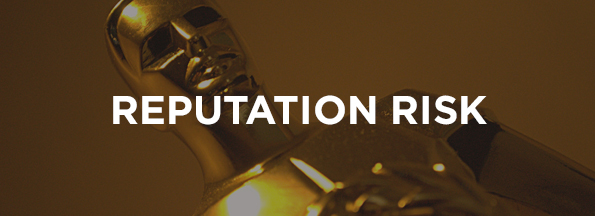Reputation Risk in a Twitterized World

The climax of the Academy Awards is imminent, with the announcement of the Best Picture unfolding on the stage. A PricewaterhouseCooper employee has just two red envelopes left in her briefcase. She inadvertently pulls the wrong one, and Faye Dunaway announces the winner. However, that wasn’t really the winner.
The next day, the PwC stock price fell $1.50, and the firm was all over the news, It was being blamed for the chaotic ending to the awards ceremony that saw La La Land wrongly given the Best Picture prize before the onstage correction that gave the award to Moonlight, the actual winner.
Will the damage to PwC’s reputation be large and irreversible? Probably not. It was an unfortunate mistake that was quickly rectified in full public view. However, the event does illustrate some important points about reputation management in this era. The damaging event happened in real time, was broadcast universally, and hit the top of the news the next day. The firm was called upon to explain its gaff, which not only hurt its brand image but also denied the true winner the full adulation it deserved on the stage. Some people would sue for less.
An organization’s reputation is bound with its brand’s image. Since a good brand image is a powerful source of value, reputation translates into concrete performance on measures like customer loyalty, sales, stock price, and even regulatory compliance. These measures can be moved in a moment by social media and online “news” distribution.
The speed and reach of electronic media are something new. Bad news has always traveled faster than good news, but today, it’s at the speed of light. Organizations have no choice but to address the bad news before it happens.
Imagine 250 airline passengers sitting on a tarmac while other planes get deiced for takeoff — there is no gate space. By rule, these delays can last several hours before the airline is required to deplane their customers from the cramped seats with 30 inches of legroom. The airline employees on that plane are just as annoyed by the circumstances as the passengers.
In this example, it’s not the airline’s fault that the weather is causing a delay, or that various rules keep people trapped in tiny airline seats for hours. Obviously, these passengers are angry that they are trapped, and are most likely writing a negative post about the delay on social media.
How this situation is treated by the employees can help or hurt the airline’s reputation with customers, and do it in real time. If the employees have been selected and trained to maintain a good attitude, go out of their way to respond to customer needs with kindness and understanding, and explain the situation as many times as needed, the tweets will be tempered with respect for the airline. The anger won’t go away, but it won’t be dumped on that easy target, as the airline is represented by the employee who’s standing there.
PwC’s Academy Award meltdown probably could not have been prevented by a better employee screening program. The job handing out award envelopes at the event is probably a special treat given to the most deserving employees.
However, a well-designed risk management program and a strong employee screening program CAN help to cut risks and identify and hire employees who will survive an unexpected disruption with a calm demeanor. Employees are the first line representatives of the organization who support and build the organization’s reputation. Or not.